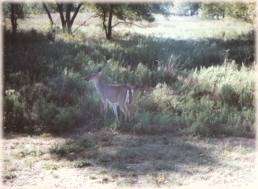Pelican Viewing
Starting date:
Ending date:
Event Details
Pelican Viewing --- thousands of pelicans typically migrate to the Great Salt Plains area in Mid-Sept. The number of birds are dependent upon when the pelicans choose to migrate into the area. Typically mid September.
(ALWAYS CALL TO VERIFY IF BIRDS ARE THERE) --------
White pelicans start arriving at Salt Plains National Wildlife Refuge in early September as they migrate south from their nesting grounds in Canada, the Dakotas, Colorado, Wyoming and Minnesota. They stop at Salt Plains to feed and rest before continuing their annual trek south to the Texas and Louisiana Gulf Coast where they will spend the winter. The white pelican population will peak at Salt Plains NWR at 20,000 to 50,000 birds. White pelicans are four to five feet tall and have a wingspan of eight feet. They will feed primarily on small fish such as carp and shad in the shallow Salt Plains Lake. The white birds have black wing tips and gather fish with their pouched bills.
The Refuge has a large variety of shorebirds, waterfowl, and songbirds. Over 300 different species have been identified in the area. There is also a variety of other wildlife which can be seen including deer and turkey. Visitors are encouraged to stop by the Refuge office for information or directions. A hiking trail and an auto tour route are also located near the Refuge office. Shorebirds may also be seen at the Shorebird Trail located along Highway 11.
There are no fees or permits required. Salt Plains National Wildlife Refuge is one of over 500 National Wildlife Refuges located throughout the nation, which are operated by the U.S. Fish and Wildlife Service.
The area is well known for its tremendous waterfowl and shorebird populations. It has been recognized by the American Bird Conservancy as a globally important bird area and is also designated as a Western Hemisphere Shorebird Preserve. It is also a stopover point for whooping cranes migrating south to Aransas National Wildlife Refuge on the Texas coast.
Pelican Viewing
Phone : 580-596-6111 (Always call and confirm events.)
Web: www.cherokeemainstreet.org
Birdwatching
Great Salt Plains State Park Camping
 The State Park offers both waterfront and wooded primitive and RV campgrounds. Sandy Beach has 34 primitive and 27 RV sites at Area 1 and approximately 43 primitive sites at Area ll, and a swim beach with bathhouse. The Salt River Road Area has 36 RV sites and 15 primitive sites, trails, and a marina. The North and South Spillway Areas each offer approximately 8 primitive campsites.
The State Park offers both waterfront and wooded primitive and RV campgrounds. Sandy Beach has 34 primitive and 27 RV sites at Area 1 and approximately 43 primitive sites at Area ll, and a swim beach with bathhouse. The Salt River Road Area has 36 RV sites and 15 primitive sites, trails, and a marina. The North and South Spillway Areas each offer approximately 8 primitive campsites. There are seven comfort stations (three with showers) located throughout the park, including at least one in each of the campgrounds; and one sanitary dump station is available for recreational vehicle use. Semi-modern campground and comfort station in River Road is open year round. Other comfort stations are open from March 15 to October 31.
Great Salt Plains State Park Cabins
Six cabins each feature a fully-equipped kitchen, a double bed and a hide-a-bed. The cabins are air-conditioned and heated. Five of the cabins will each accommodate four guests. One larger cabin, furnished with two double beds and a hide-a-bed, will accommodate six guests. Cabins are provided with cookware, dishes, utensils, towels, linen, and cleaning supplies. There are no telephones, television or fireplaces in the cabins. Cabins are available year round.
Great Salt Plains State Park Trails
Hiking includes the Tonkawa Interpretive Trail, an easy 3/4 mile trail that is great for seniors and handicapped persons, located just north of the spillway.
The George Sibley Trail, is a seven mile, multi-use trail for horses, hikers, and mountain bikers (an equestrian campground is available).